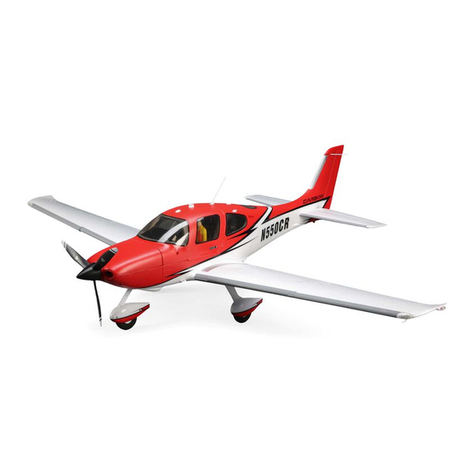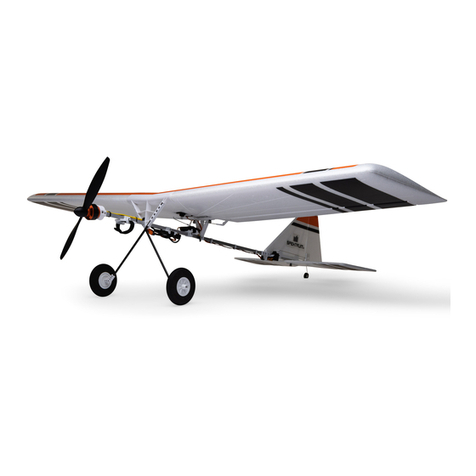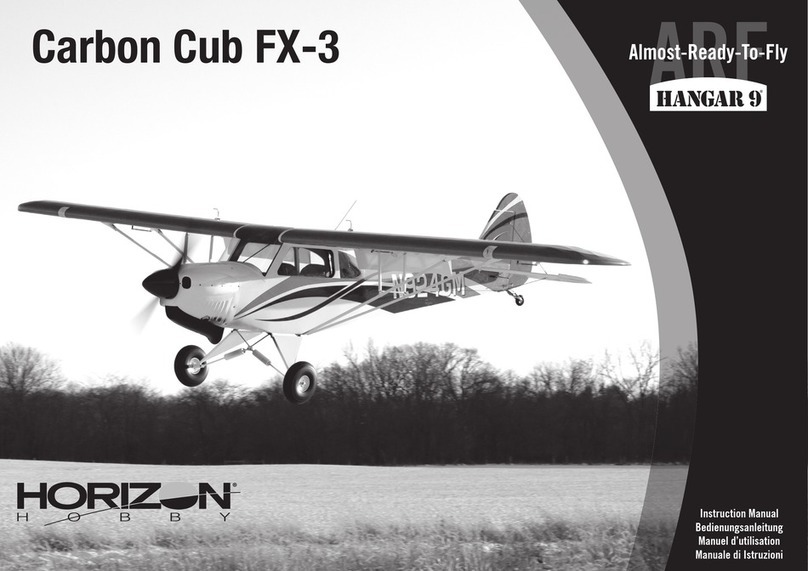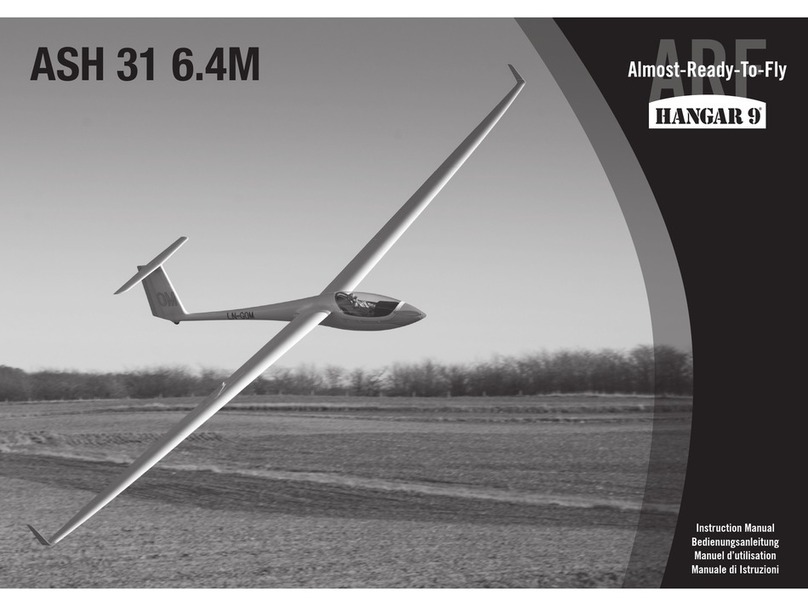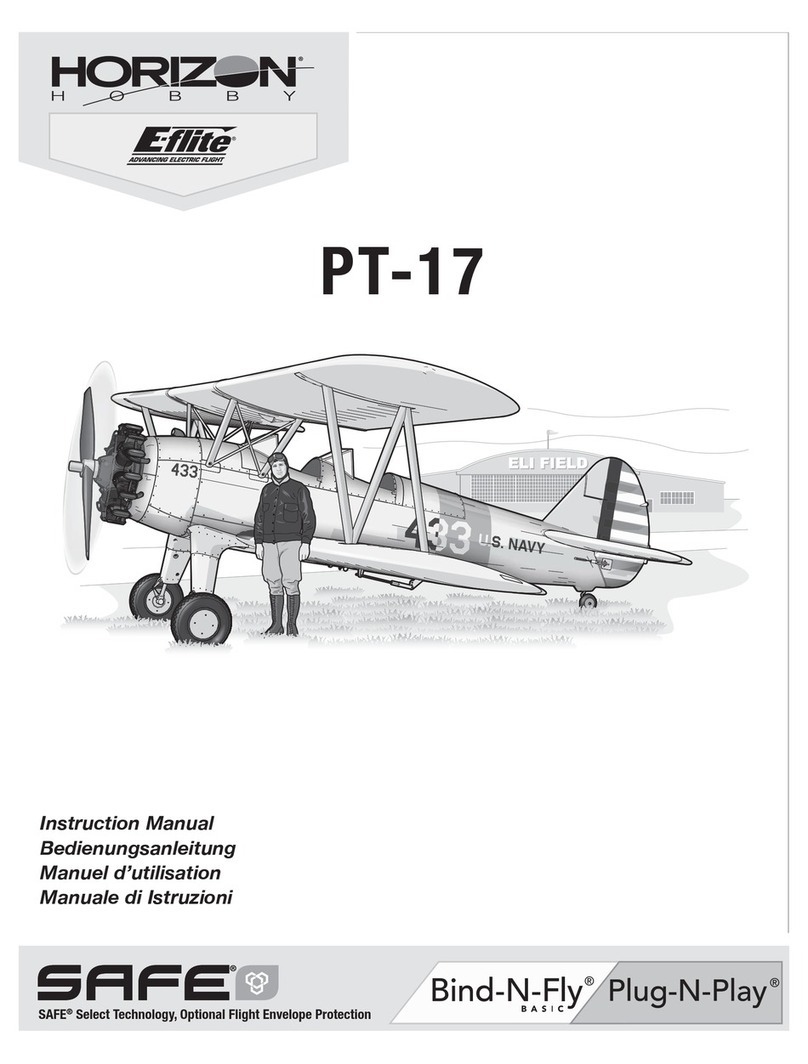
EN
4Ultra Stick 1.1m
Transmitter Setup BNF
DX Series Transmitter Setup
1. Power ON your transmitter, click on scroll wheel, roll to System Setup and
click the scroll wheel. Choose yes.
2. Go to Model Select and choose <Add New Model> at the bottom of the list.
The system asks if you want to create a new model, select Create
3. Set Model Type: Select Airplane Model Type by choosing the airplane.
The system asks you to conrm model type, data will be reset. Select YES
4. Set Model Name: Input a name for your model le
5. Select <Main Screen>, Click the scroll wheel to enter the Function List
6. Set D/R (Dual Rate) and Expo; Aileron
Set Switch: Switch F
Set High Rates: 100%, Expo 10% -Low Rates: 70%, Expo 5%
7. Set D/R (Dual Rate) and Expo; Elevator
Set Switch: SWITCH C
Set High Rates: 100%, Expo 10% - Low Rates 70%, Expo 5%
8. Set Throttle Cut; Switch: Switch H, Position: -100%
iX Series Transmitter Setup
1. Power ON your transmitter and begin once the Spektrtum Airware app is open.
Select the orange pen icon in the upper left corner of the screen, the system
asks for permission to Turn Off RF, select PROCEED
2. Select the three dots in the upper right corner of the screen,
select Add a New Model
3. Select Model Option, choose DEFAULT, select Airplane.
The system asks if you want to create a new acro model, select Create
4. Select the last model on the list, named Acro.
Tap on the word Acro and rename the le to a name of your choice
5. Tap and hold the back arrow icon in the upper left corner of the screen to
return to the main screen
6. Go to the Model Adjust menu
7. Set Dual Rates and Expo; Select Aileron
Set Switch: Switch F
Set High Rates: 100%, Expo 10% -Low Rates: 70%, Expo 5%
8. Set Dual Rates and Expo; Select Elevator
Set Switch: SWITCH C
Set High Rates: 100%, Expo 10% - Low Rates 70%, Expo 5%
9. Set Throttle Cut; Switch: Switch H, Position: -100%
NX Series Transmitter Setup
1. Power ON your transmitter, click on scroll wheel, roll to System Setup and
click the scroll wheel. Choose yes.
2. Go to Model Select and choose <Add New Model> near the bottom of the
list. Select Airplane Model Type by choosing the airplane, select Create
3. Set Model Name: Input a name for your model le
4. Select <Main Screen>, Click the scroll wheel to enter the Function List
5. Set Rates and Expo; Aileron
Set Switch: Switch F
Set High Rates: 100%, Expo 10% -Low Rates: 70%, Expo 5%
6. Set Rates and Expo; Elevator
Set Switch: SWITCH C
Set High Rates: 100%, Expo 10% - Low Rates 70%, Expo 5%
7. Set Throttle Cut; Switch: Switch H, Position: -100%
Dual Rates
Take first flights in Low Rate. For landings, use high rate elevator.
NOTICE: To ensure AS3X®technology functions properly, do not lower rate
values below 50%. If lower rates are desired, manually adjust the position of the
pushrods on the servo arm.
NOTICE: If oscillation occurs at high speed, refer to the Troubleshooting Guide
for more information.
Exponential
After rst ights, you may adjust exponential in your transmitter.
Telemetry Setup
See the Telemetry Setup table after binding. In order for the ESC and battery
information to auto-populate in your transmitter’s telemetry menu, you must begin
telemetry setup with the aircraft bound and connected.
